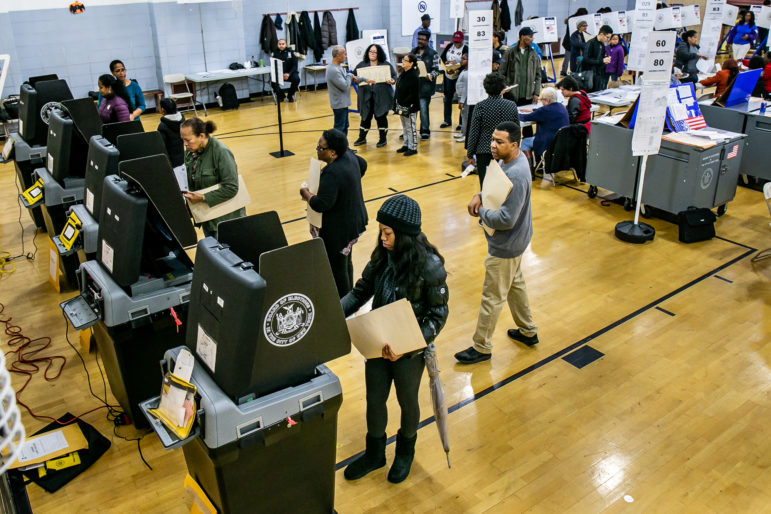
Adi Talwar
Voting in the 2018 state elections. If a proposed change to the city charter is passed this November, future municipal elections will function very differently.
A public-school system that universally provides students with an excellent education is essential in preparing our children for full and productive lives, and it is critical for our country’s competitiveness in an increasingly complex and rapidly changing global economy. So, when the most pressing issues affecting students, parents, and our communities are not being given the attention or focus they deserve by elected officials, we all suffer.
We need leaders who will muster enough political will to make needed changes to our public schools, deliver the appropriate resources, and stick with those plans over time, especially when under pressure. Right now, there are huge structural problems in both our government and our schools that prevent that from happening. The only way to address these issues is to create broad systems change.
In November, voters will have a chance to make that kind of change possible – by deciding whether or not to amend New York City’s Charter and adopt Ranked Choice Voting for local elections. Ranked Choice Voting would reform our existing winner take all model of elections and elevate voters’ voices over entrenched political interests.
Here’s how the New York City amendment works: In future local elections, voters can rank up to five choices in order of preference or vote for just one candidate like they always have. If no candidate receives a majority of the vote, the candidate with the least votes is eliminated, and that candidate’s votes are redistributed based on the second preferences indicated on those ballots. This process continues until a candidate wins with a majority of the remaining votes. One of the key benefits of this tested and popular reform is that instead of having to only vote for the person you think can win, you get to vote for the person(s) you believe in first. And you don’t have to worry about the spoiler effect. If there are three candidates you like, they all benefit, and your true preferences won’t impact their chances of winning.
This is a critical moment in our politics where we must work to build a system that rewards the best ideas, not just the loudest voice in the room. In 2021 there will be nearly 500 candidates running for scores of local seats in New York City. Voters will have tough decisions to make. In a crowded field, Ranked Choice Voting would make it even more possible to ensure that as many voters as possible choose the eventual winner.
Implementing Ranked Choice Voting would mean that every city elected official would have to get to a majority to win. That basic requirement will result in campaigns needing to engage with more communities and more voters. That will give every individual voter a greater voice and help to guarantee that elected officials represent a broad constituency, not just a handful of people who were involved with their campaign.
We don’t have time to waste. The future of our local public schools will depend on the thousands of daily decisions made by elected officials in New York City, including city council members, the Mayor, and others with influence on issues connected to public education. If we want our political systems to function and benefit from a rich discussion of the important role of public schools, we need a system that makes that possible. If we want everyone who is impacted by public education to be represented in the discussion and decision-making process, we need our democratic process to ensure their votes matter. And, if we want the voices of those most reliant on our public-education system to be heard, we need our political systems to work.
It is time to empower every New Yorker to choose. Ranked Choice Voting gets us one step closer to achieving a truly democratic system that works for everyone, and drives change and accelerates progress toward a future where every child in New York City has the opportunity to benefit from a high-quality public education.
Emma Bloomberg is Founder and CEO of Murmuration, a non-profit that works to ensure every child in this country benefits from a high quality public education.








